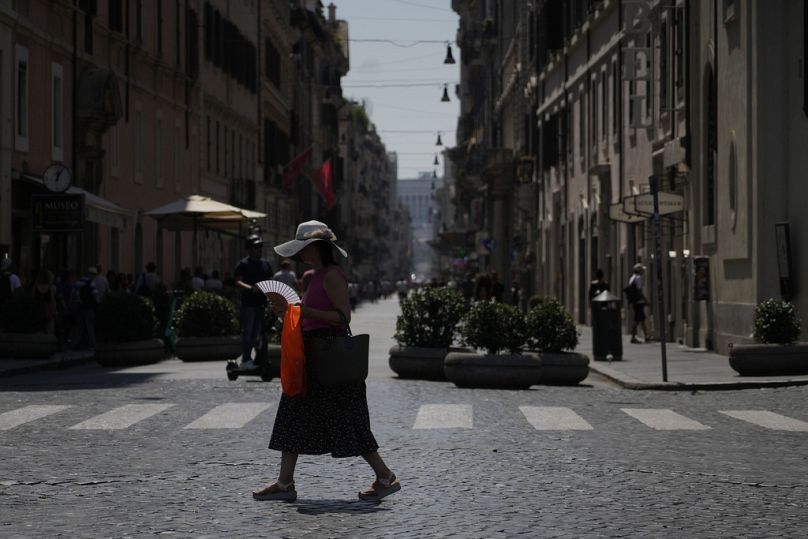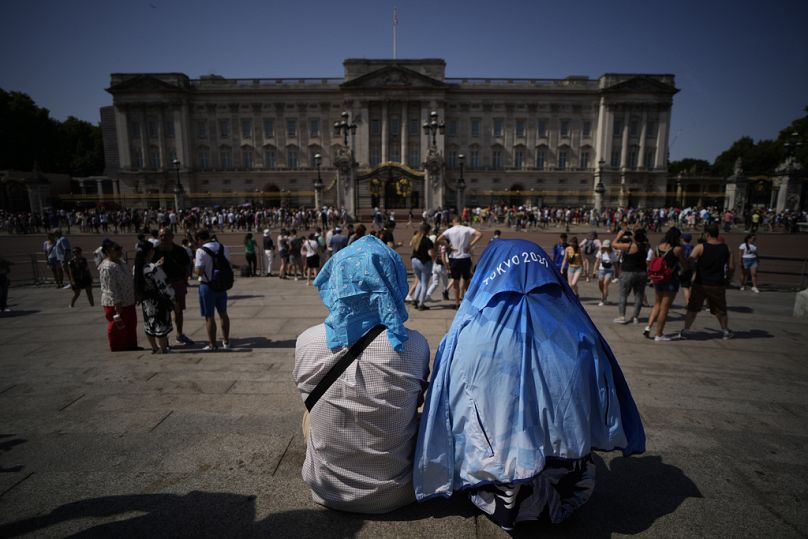Just because summer is now over, we cannot afford to shy away from this challenge — long-term changes implemented now are the most effective means to rethink how we build and live in cities before it’s too late, Dima Zogheib writes.
Heat records were smashed across Europe, tourist attractions were closed, red alerts were placed in 23 Italian cities and 1,200 children were evacuated from a Greek summer camp to escape wildfires.
Heatwaves are set to become even more frequent and severe, with the number of cities exposed to extreme temperatures estimated to nearly triple by 2050, and certain groups including those on lower income, older adults, infants and people with underlying health issues.
European cities have been pioneering heat resilience in many ways — with Athens being one of the first in the world to appoint a Chief Heat Officer and cities like Seville naming heatwaves to boost public awareness.
However, Europe can’t leave it to state and city leaders to tackle urban heat. The issue of urban heat islands needs to also be addressed at a street and neighbourhood level, by those shaping the built environment. And nature needs to be at the heart of the solution.
Europe’s urban heat island problem
The built environment is a huge contributor to increasing city temperatures. We’ve pushed out nature, concreted our streets and built high in steel and glass, creating what is known as the urban heat island (UHI) effect — where urban temperatures are far higher than their rural surroundings.
We recently launched our Urban Heat Snapshot to encourage city leaders, urban designers, and all those shaping the built environment to better understand how their designs can mitigate urban hot spots, particularly for the most vulnerable communities.
The snapshot maps the most extreme “hot spots” in six major cities — from Madrid to Cairo — around the world. It found Madrid’s urban centre has the most extreme UHI “hot spot”, with temperatures 8.5°C hotter than its rural surroundings.
And importantly it highlights that not everyone within cities experiences heat in the same way.
There can be big differences from one neighbourhood to the next, with Madrid’s built-up downtown experiencing temperatures almost 8°C hotter than El Retiro Park a short distance away. In the majority of cities, the coolest spots were found always in parks, away from residential and commercial areas.
The good news is that urban heat can be tackled, and there are several things cities can do right away.
Use every space possible for nature and increase tree cover
Prioritising and investing in the value, quality and quantity of nature in cities is a must to reduce urban heat. In many European cities, greenery is confined to small spaces, with people questioning how much room there is to add different forms of green infrastructure.
But old, established European cities have much more available space than you’d think to add nature.
In fact, more than half of the space in cities — including roofs and streets — is open space, providing a large canvas for deploying green and blue infrastructure to build resilience. Urban designers and planners need to think creatively to deploy nature strategically and equitably throughout our cities.
Trees have been proven to lower temperatures in cities and reduce heat-related mortality. In fact, a recent study found increasing tree coverage in European cities to 30% could have prevented 2,644 excess deaths.
Advanced technologies now allow designers to understand exactly the type and number of trees that are required.
Create more permeable surfaces and establish cool islands
Permeable surfaces, such as bare or planted soil, tend to absorb less heat compared to impermeable surfaces like concrete or asphalt.
Sustainable urban drainage schemes are not only slowing down water runoff during heavy rainfalls, but also increasing areas of green space, and cooling neighbourhoods during hot temperatures.
We need to create a network of cooling spaces in cities for people to take refuge from the heat.
For example, in London, we worked to map cool spaces where locals could find opportunities to shelter during hot days in a bid to reduce the risk to health from hot weather.
Something as simple as bringing back drinking water fountains to cities could improve the health of citizens, becoming the main access point to water during a drought.
Encourage behaviour change and deploy digital tools
Design can only do so much. Fundamentally, people will need to change the way they live in cities within the next decade.
Hot countries around the world have been adjusting their lives to this for centuries, and it’s time to learn from them — Northern European cities can learn from changes already established in the South such as siestas and shop and restaurant closures over peak heat.
We now have the digital capabilities to bridge the gap between what’s causing the UHI effect in cities and the impact of our designs on urban heat and we need to be using these in all projects.
Adapting European cities to extreme heat requires a vision and urgent implementation.
We should be designing at a street and neighbourhood level, bringing back nature throughout cities, not just confined to parks and existing green areas, to build more resilient and more inclusive cities for everyone.
Just because summer is now over, we cannot afford to shy away from this challenge — long-term changes implemented now are the most effective means to rethink how we build and live in cities, before it’s too late.
Dima Zogheib is Nature Positive Design Lead at Arup, specialising in sustainable, resilient and inclusive design.
At Euronews, we believe all views matter. Contact us at view@euronews.com to send pitches or submissions and be part of the conversation.














